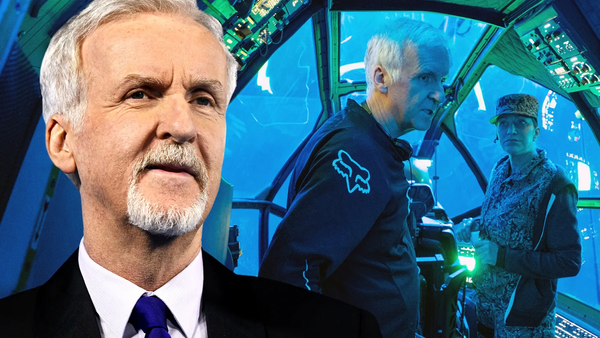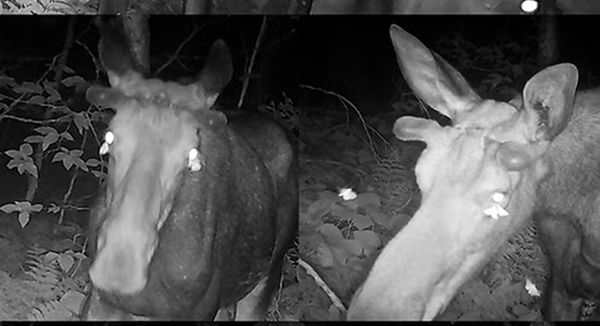A rogue Romanian economist won the lottery 14 times

From The Hustle: "Just after 11 PM on February 15, 1992, a janky ball machine at the Virginia State Lottery HQ spit out 6 winning numbers on live television: 8… 11… 13… 15… 19… 20. In the coming days, officials would find out that one “person” had secured not only the $27,036,142 jackpot, but 6 second prizes, 132 third prizes, and 135k minor prizes collectively worth another $900k. What unfolded next was the strangest, most improbable lottery tale in history — one involving thousands of international investors, dozens of complex computer systems, and a mathematical savant. This is the story of the man who “gamed” the lottery by buying every possible combination. In the late 1960s, a young Romanian economist named Stefan Mandel was struggling to get by. Many Romanians might have turned to a life of crime. But Mandel, a self-described “philosopher-mathematician,” saw another way out: The lottery."
Researchers have brought prehistoric algae back to life after 7,000 years in Baltic Sea mud

From Phys.org: "A research team led by the Leibniz Institute for Baltic Sea Research Warnemünde (IOW) was able to revive dormant stages of algae that sank to the bottom of the Baltic Sea almost 7,000 years ago. Despite thousands of years of inactivity in the sediment without light and oxygen, the investigated diatom species regained full viability. Many organisms, from bacteria to mammals, can go into a kind of "sleep mode," known as dormancy, in order to survive periods of unfavorable environmental conditions. They switch to a state of reduced metabolic activity and often form special dormancy stages with robust protective structures and internally stored energy reserves. This also applies to phytoplankton, microscopically small plants that live in the water and photosynthesize. Their dormant stages sink to the bottom of water bodies, where they are covered by sediment over time and preserved under anoxic conditions."
A 1938 German expedition to Tibet went in search of the mythical kingdom of Agartha

From La Brujula Verde: "In the 1930s the Ahnenerbe — a research institute founded by Himmler dedicated to investigating the past of the Aryan race — commissioned an expedition led by the naturalist Ernst Schäfer, also a member of the SS. Schäfer, born in Cologne in 1910, studied zoology and geology at the University of Göttingen, and between 1930 and 1931, he undertook the first of his three journeys to Tibet. His findings in Asia fascinated Himmler, who had just founded the Ahnenerbe in 1935, which aimed to study all matters related to the Aryan race, which it considered biologically and culturally superior. According to a doctrinal framework that combined racism, esotericism, occultism, and history, the origins of this race were believed to lie in the mythical kingdom of Agartha, which some speculated could be located in the Himalayas. This was linked to another myth embraced by the Nazis: the Hollow Earth theory."
Hi everyone! Mathew Ingram here. I am able to continue writing this newsletter in part because of your financial help and support, which you can do either through my Patreon or by upgrading your subscription to a monthly contribution. I enjoy gathering all of these links and sharing them with you, but it does take time, and your support makes it possible for me to do that. I also write a weekly newsletter of technology analysis called The Torment Nexus.
The shrouded and somewhat sinister history of the humble bulldozer

From Noema: "According to an 1881 obituary, the word “bulldozer” was coined by a German immigrant named Louis Albert Wagner, who later committed suicide by taking a hefty dose of opium dissolved in alcohol. Little else is recorded about Wagner, but his term became a viral sensation in late 1800s America, going from street slang to dictionary entry in just one year. The bulldozer we know today took shape in the first quarter of the 20th century. In 1917, the Russell Grader Manufacturing Company advertised a bulldozer in their catalog: a huge metal blade pulled by mules that could cut into the earth and flatten the land. Vermont-born industrialist Robert G. LeTourneau had the greatest impact on the development of the bulldozer. LeTourneau was an eccentric evangelical Christian who believed that he created his machines in collaboration with God. “God,” he declared, “is the chairman of my board.” A gifted engineer, he was responsible for hundreds of innovative advances in bulldozer design."
More than twenty ultramarathon runners died of hypothermia during a race in China

From Wikipedia: "On 22 May 2021, twenty-one professional runners died from hypothermia while competing in a government-run 100-kilometre (62 mi) trail running race held in the Yellow River Stone Forest in Gansu, China. The race had 172 participants. When a cold front struck, rain and possibly hail were carried by gusts reaching 75–88 km/h [47–55 mph]. The apparent temperature dropped from 1 °C (34 °F) at 10:00 to −5 °C (23 °F) from 11:20 to 13:50. Many runners collapsed unconscious from hypothermia. The organizers were unaware of the scope of the disaster because they did not assign any staff between checkpoints and they did not know the distressed point was in mobile phone signal blind spots. The collapsed runners did not survive and rescuers did not arrive until 19:00. The dead were from the lead pack due to the timing of the cold front, while the slower runners survived."
He ran 1,100 kms over the year to make the shape of a dancing figure
A Toronto man ran 1,105 kilometers (687 miles) over a year, carefully planning his routes to form the shape of a dancing figure
— Science girl (@gunsnrosesgirl3) March 5, 2025
pic.twitter.com/hW47w44sUT
Acknowledgements: I find a lot of these links myself, but I also get some from other newsletters that I rely on as "serendipity engines," such as The Morning News from Rosecrans Baldwin and Andrew Womack, Jodi Ettenberg's Curious About Everything, Dan Lewis's Now I Know, Robert Cottrell and Caroline Crampton's The Browser, Clive Thompson's Linkfest, Noah Brier and Colin Nagy's Why Is This Interesting, Maria Popova's The Marginalian, Sheehan Quirke AKA The Cultural Tutor, the Smithsonian magazine, and JSTOR Daily. If you come across something interesting that you think should be included here, please feel free to email me at mathew @ mathewingram dot com



